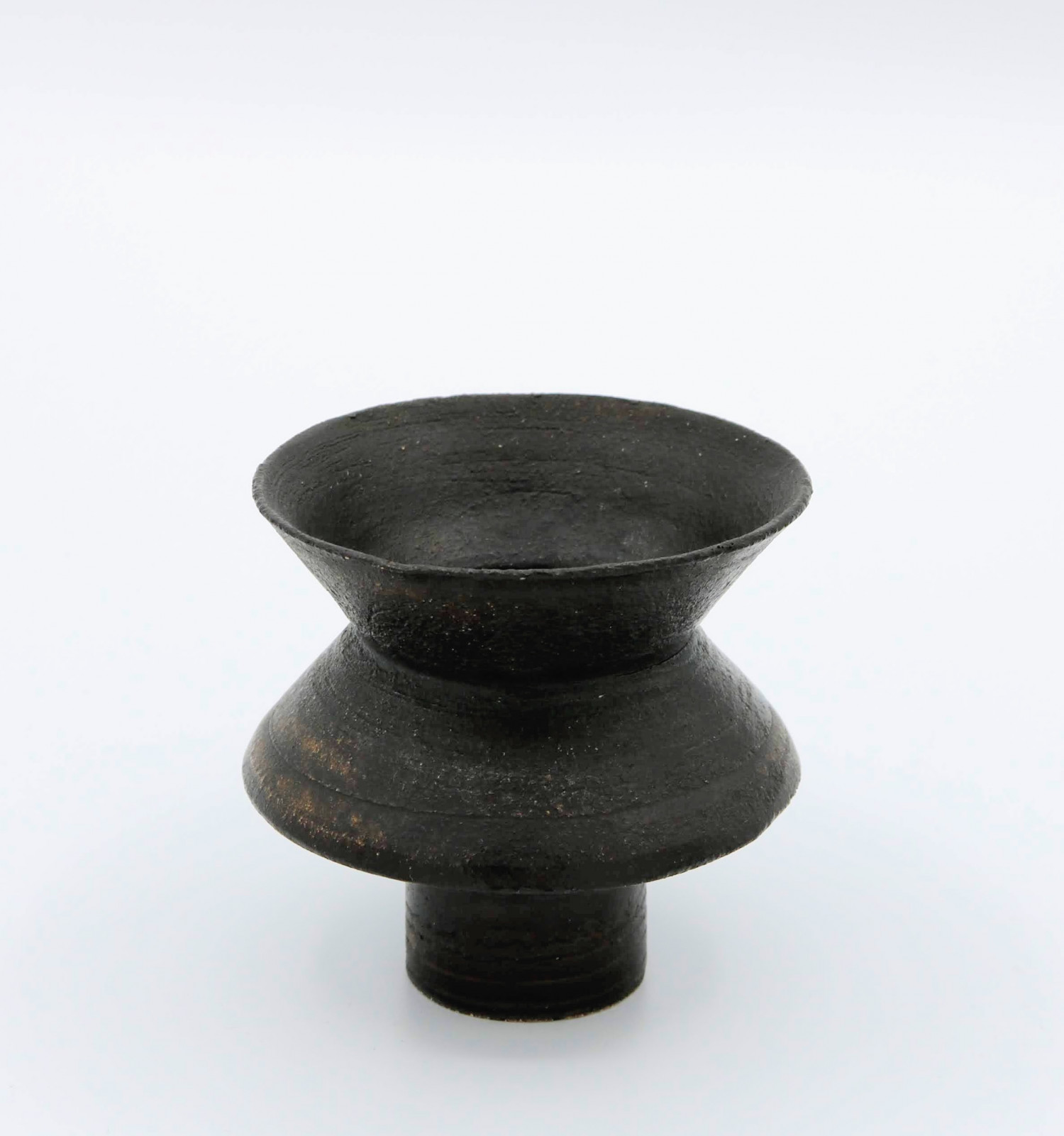Provenance:
Caroline & Ralph Brown, given by the artist to Caroline as a birthday present in 1962.
The sculptor Ralph Brown was, along with Coper and the weaver Peter Collingwood, part of the first group of artists to become part of the pioneering arts community that repurposed a redundant Georgian house in Hertfordshire. Moving into his studio and living space in late 1958, Coper would stay there for five years and during that time he developed his work in new and exciting directions and forged lasting friendships with many of the other artists who worked there.
Although relatively small, this pot inhabits a much larger space. Constructed from four thrown elements, it belongs to a period when not only was Coper becoming ever more adventurous in the forms he sought to make but when he was at his most highly critical. Every pot was subject to intense scrutiny and any which did not meet his exacting standards were destroyed. The dark manganese glaze he was using at this time is in fact not black but a very intense deep brown colour, similar to that often used to colour bronze and indeed this pot dates from a period when Coper did experiment with making bronze casts of some of his pots. In sunlight, the glaze shows hints of golden colours, enlivening a surface into which Coper has incised spiral rings. By doing so, he heightens the sense of movement in the form which, with its sharply angled upper body, already gives a strong sense of movement and poise. A very alive piece, it is able to capture the viewers attention in even the most crowded space.
This form seems to be a relatively unexplored one for Coper at this time, but he would return to it in the later 1960s when he created a group of slightly waisted standing cup forms which have become one of the most familiar in his mid-career vocabulary.
Coper seems to have been particularly careful in his choices when giving his work as gifts and thus its gifting to Caroline Brown suggests that it was a piece he viewed as significant in its quality and attainment. This is certainly borne out when one spends time with it. The powerful shape is contained well by its small size, reminding us that size and scale are very different concepts. Indeed it is interesting to contemplate that this pot is contemporary with the candlesticks Coper made for Coventry Cathedral which, at seven feet tall when completed, were the largest pieces he was to make.
